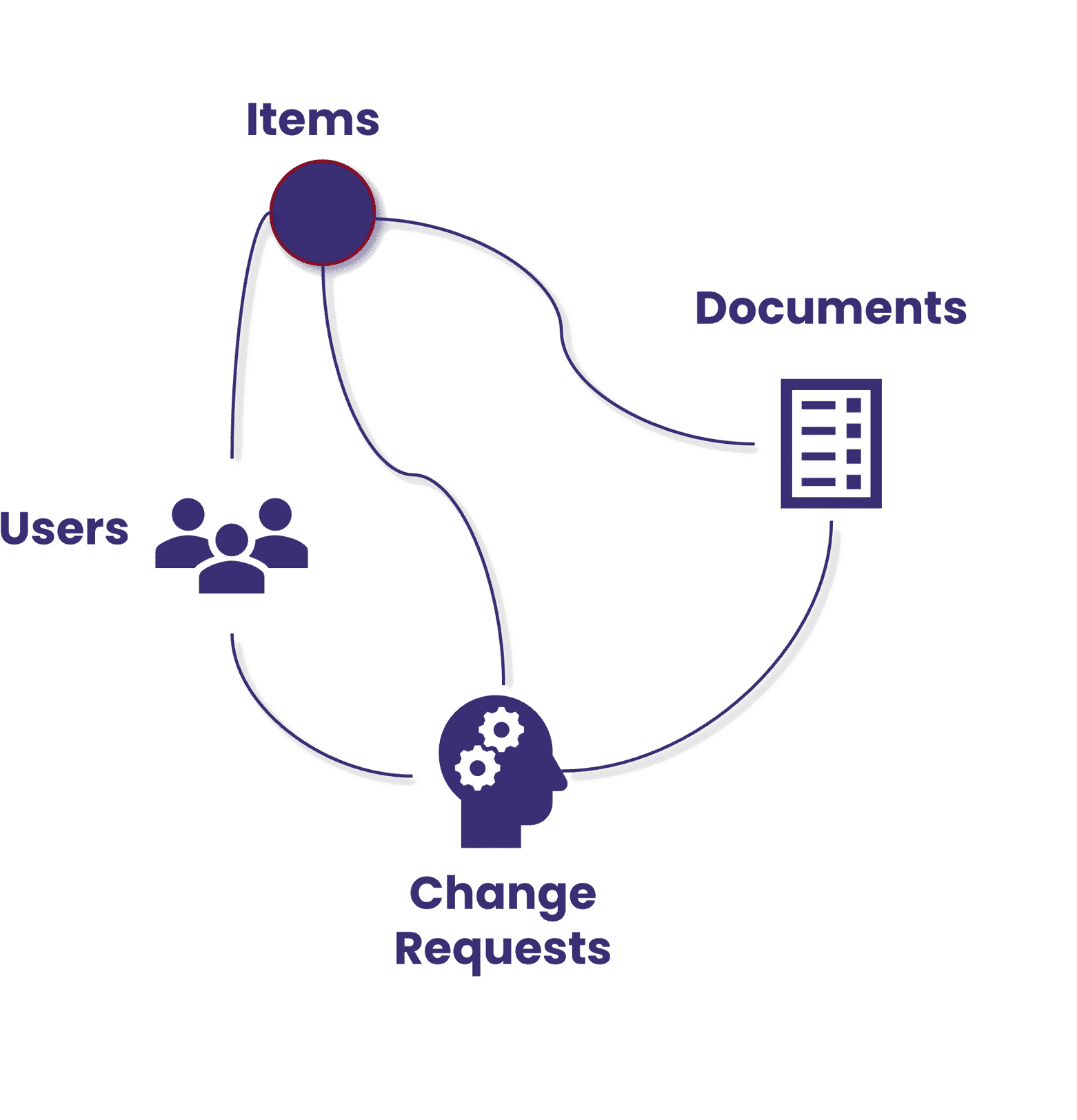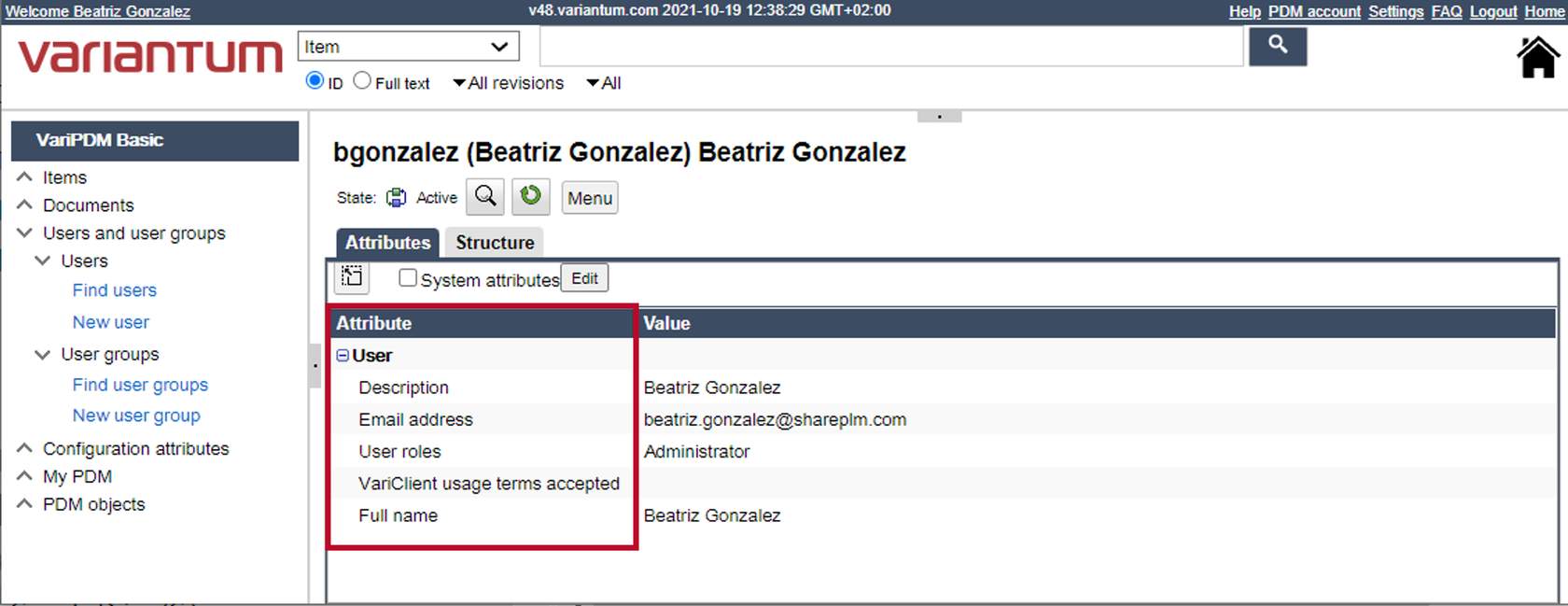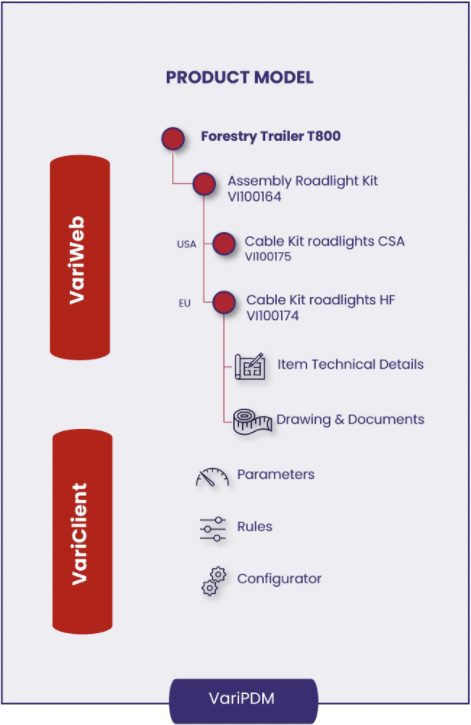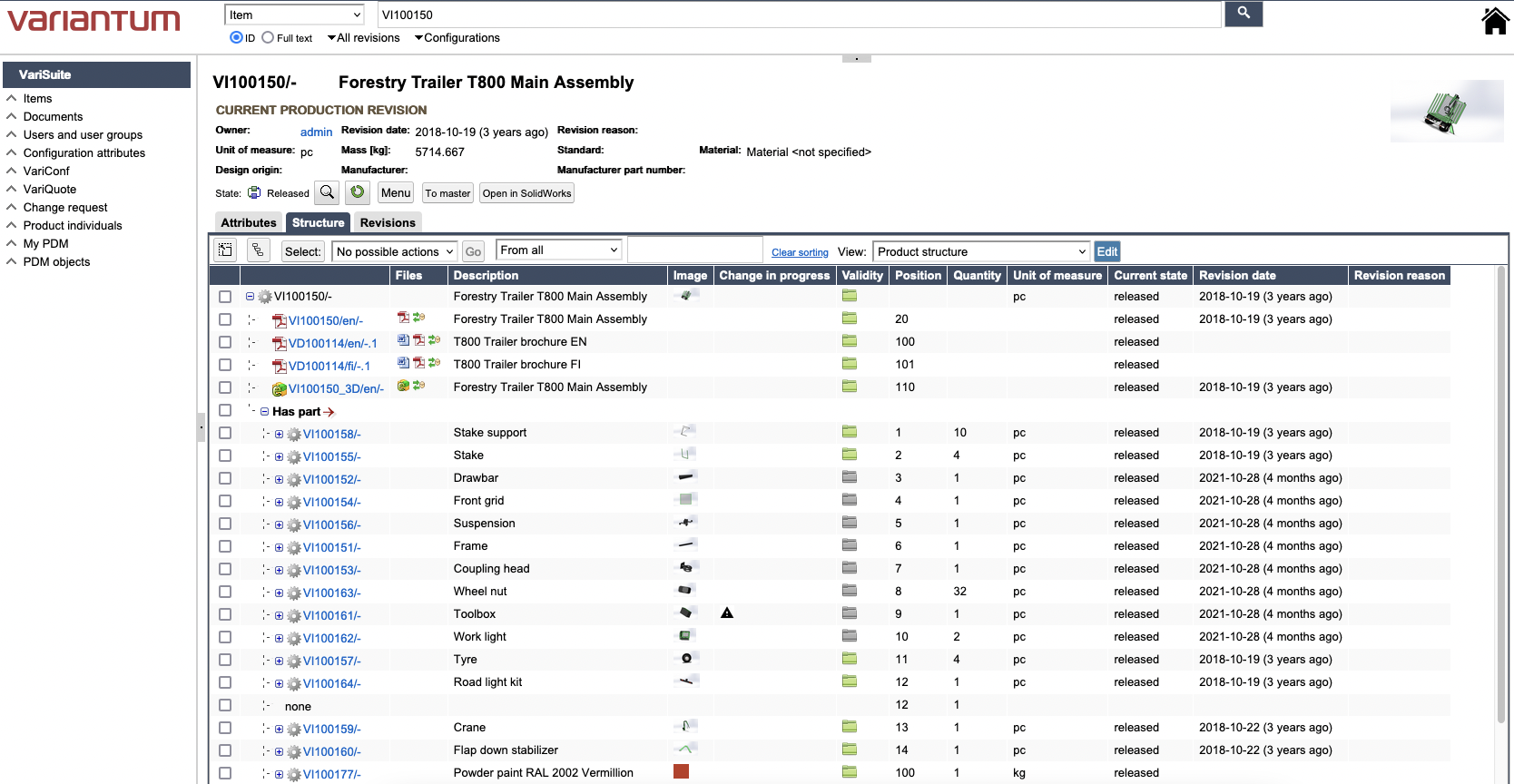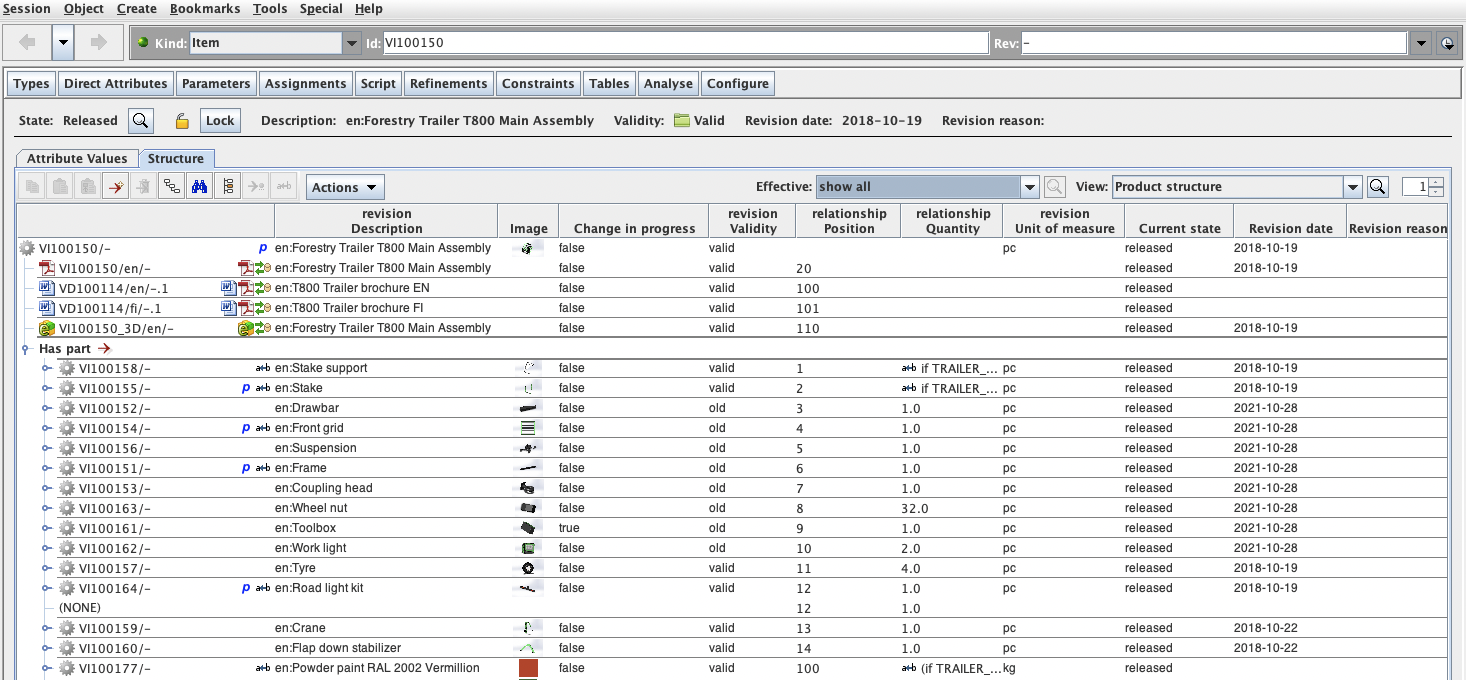Getting Started
Table of Contents
Diving Deeper into VariSuite
Would you like to know more about VariSuite? Then let’s dive a little deeper! As mentioned in the VariSuite Overview article and the VariSuite Overview e-learning course, VariSuite provides two user interfaces: VariWeb and VariClient.
VariWeb is a browser application with an easy-to-use web interface. VariWeb is convenient for basic usage, such as searching for items, checking product structures and simple data modifications.
For more advanced needs and for admin users VariClient offers more functionalities and supports administration tasks, such as creating attributes and manipulating configurable product models. VariClient is a graphical client program which runs on a user’s workstation.
This article will introduce you to some of the different functionalities of VariWeb and VariClient. Let’s get started!
VariSuite data is mainly stored in a database and in a document vault. The document vault stores the contents of document files and the database contains all other data, such as objects, relationships and their attributes.
Understanding VariPDM’s Key Objects
Objects in VariSuite
Having a big amount of product data is beneficial only if it is properly organized, it can be easily found, and it is utilized to meet customers’ requirements and needs. In VariSuite data is organized in small packages called objects. An object can be an item, a revision of an item, a document, a user, a user group, or a change request.
Object Master
The Object Master level manages common attributes for the object. It defines flexible access and visibility rights for all revisions, users, user groups and roles. It also has its own Master Lifecycle: Active, Replaced, Terminated.
Object Revision
Some objects, like items and documents, can have revisions. Revisions control the changes done to the object and revisions have their own lifecycle separate to the master level lifecycle. For example, revisions and revision control support the item release management process.
There may be many revisions of an item:
- Revision A, Released (Old)
- Revision B, Released (Current Production)
- Revision C, Draft (In Design)
Each one of the revisions will follow the following lifecycles: Draft, Ready, Checked, Released.
Attributes
In VariPDM database, attributes represent the characteristics or properties that define a database object. For instance, a user can have several attributes, such as description, email address, user roles, etc.
Items and Structures
Items describe material management objects e.g. assemblies, components, parts, or any level Item type objects that help capture a complete product definition, for example, a complete trailer.
All items that make up a product model are part of the bill of materials (BOM) or engineering structure. They collect CAD assembly designs, software, packaging, mechanical specifications and other information into a single comprehensive view.
Documents
Documents are database objects that can be imported or created directly in VariPDM. They contain files and are typically connected to items. Documents have master, revisions, language variants and minor versions. Master manages common attributes and access rights.
Documents complement and enrich the product information. They can be imported from CAD systems or from MS Office tools. VariPDM supports multiple types of file extensions and language variants.
Product Structure and Product Model
The product structure consists of items, documents, and rules organized in a structural way. It represents a physical product organized in modules or assemblies and contains information such as engineering details, drawings, technical specifications, CAD details, painting instructions, service products, software etc.
A product structure describes different relations between objects and it can be used as a product model to cover different configuration parameters, rules, modules, components, and documents to fulfill customer demands.
Users and User Groups
User objects contain the main information of a VariPDM user and user roles control access to data. To facilitate the task of managing user accesses, VariPDM allows you to organize the users into groups to extend access and visibility rights at the object level.
Change Requests
VariPDM supports change requests (CR) to manage changes in a controlled way. Multiple items and documents can be connected to a single CR. Specific activities and tasks can also be defined and assigned to users to implement changes.
To read more about other key words, check the Key words and basic concepts page!
The Product Model
A company’s products and related services are some of its most important resources. The product model must be managed carefully during the engineering phase to make sure everything works correctly and to ensure it makes revenue for the company.
The product model is developed and managed in VariClient. In VariWeb the product model structure with parameters and selection conditions between different objects is shown in a simplified way.
In the below images you can see how the same product model structure is shown in VariWeb and in VariClient.
Product model shown in VariWeb.
Product model shown in VariClient.
Product Configurations
With VariPDM you can create, maintain, and track multiple product configurations for the same product model. VariPDM’s product configurator is designed to manage new product variant creation based on customer parameters from a customer order. The result is called a configuration. Individual product configurations are new objects with unique IDs and components selected based on the configuration parameter values and rules.
The configurator speeds up and automates individual product structures for ERP/MRP from customer-specific configurable product orders. This way you can manage your manufacturing BOM configurations for production and share manufacturing information with your suppliers. VariPDM has been designed for configurable products from the beginning so it can support all your configurable product data management needs.
Want to learn more?
Tekniikantie 4 A (Aallonharja Business Park)
02150 Espoo, Finland
Sales +358 10 425 9100

